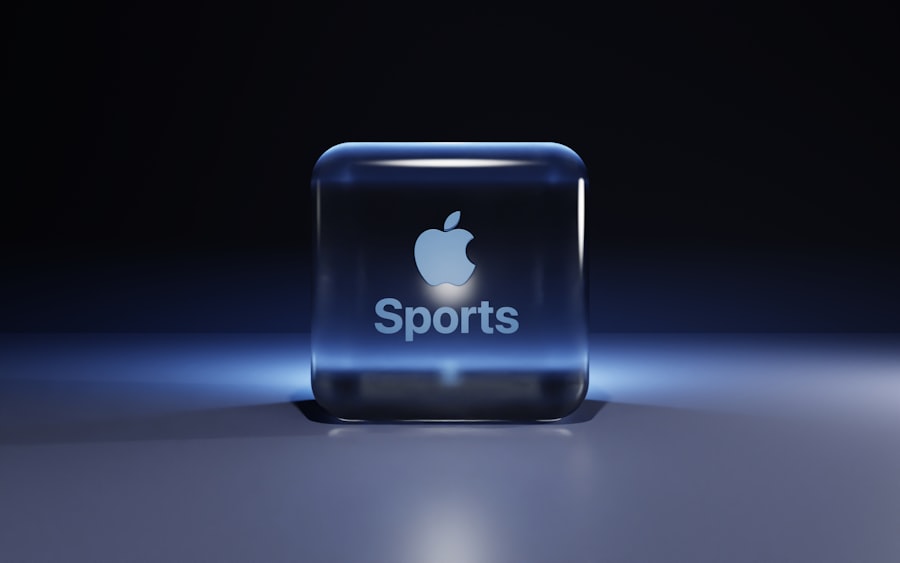Social media has revolutionized the landscape of sports marketing, providing teams, athletes, and brands with unprecedented access to fans. Platforms like Twitter, Instagram, Facebook, and TikTok have become essential tools for engaging with audiences, allowing for real-time communication and interaction. The immediacy of social media enables sports organizations to share highlights, behind-the-scenes content, and live updates, fostering a sense of community among fans.
For instance, during major events like the Super Bowl or the FIFA World Cup, social media platforms serve as hubs for fan engagement, where users can share their thoughts, reactions, and experiences in real time. This not only enhances the viewing experience but also creates a shared narrative that fans can participate in. Moreover, social media allows for targeted marketing campaigns that can reach specific demographics based on user data.
Teams can tailor their messaging to resonate with different segments of their fan base, whether they are casual viewers or die-hard supporters. For example, the NBA has effectively utilized Instagram to showcase player personalities and lifestyle content, appealing to younger audiences who value authenticity and relatability. By leveraging user-generated content and encouraging fans to share their own experiences, sports organizations can amplify their reach and create a more engaged community.
The power of social media lies not just in broadcasting messages but in fostering two-way communication that builds loyalty and enhances the overall fan experience.
Key Takeaways
- Social media is a crucial tool for enhancing sports marketing and fan engagement.
- Data analytics enables precise targeting and personalized marketing strategies.
- Interactive content and virtual experiences boost fan interaction and loyalty.
- Influencer collaborations expand brand visibility and reach in sports marketing.
- Emerging technologies like AR, VR, and mobile marketing are shaping the future of sports marketing.
Utilizing Data and Analytics for Targeted Marketing Strategies
In the age of big data, sports marketers have access to a wealth of information that can inform their strategies and enhance their effectiveness. By analyzing fan behavior, preferences, and engagement patterns, organizations can develop targeted marketing campaigns that resonate with specific audiences. For instance, data analytics can reveal insights into ticket purchasing habits, merchandise preferences, and social media interactions.
This information allows teams to segment their fan base and tailor their messaging accordingly. A football club might discover that a significant portion of its audience is interested in family-friendly events, prompting them to create promotions that cater specifically to that demographic. Furthermore, predictive analytics can play a crucial role in shaping marketing strategies.
By examining historical data, teams can forecast future trends and behaviors, enabling them to make informed decisions about pricing, promotions, and content creation. For example, if data indicates that certain games attract larger crowds or generate more merchandise sales, teams can adjust their marketing efforts to capitalize on these insights. Additionally, A/B testing can be employed to evaluate the effectiveness of different marketing approaches, allowing organizations to refine their strategies based on real-time feedback.
The integration of data analytics into sports marketing not only enhances targeting but also improves overall campaign performance.
Engaging Fans Through Interactive Content and Virtual Experiences

The modern sports fan craves engagement beyond passive consumption; they seek interactive experiences that allow them to connect with their favorite teams and athletes on a deeper level. Interactive content—such as polls, quizzes, and live Q&A sessions—has emerged as a powerful tool for fostering fan engagement. For instance, during a live game broadcast, teams can utilize social media platforms to conduct polls about game predictions or player performances, encouraging fans to participate actively in the conversation.
This not only enhances the viewing experience but also creates a sense of belonging among fans who feel their opinions matter. Virtual experiences have also gained traction in recent years, particularly with the rise of virtual reality (VR) and augmented reality (AR) technologies. Sports organizations are increasingly leveraging these technologies to create immersive experiences that transport fans into the heart of the action.
For example, the NBA has experimented with VR broadcasts that allow fans to experience games from different angles or even sit courtside virtually. Such innovations not only enhance fan engagement but also open new revenue streams through premium content offerings. By providing fans with unique interactive experiences, sports marketers can cultivate loyalty and deepen emotional connections with their audiences.
Leveraging Influencer Partnerships to Amplify Brand Reach
| Metric | Description | Example Value | Impact on Brand Reach |
|---|---|---|---|
| Number of Influencers Partnered | Total influencers collaborating with the brand | 15 | Broader audience exposure |
| Average Engagement Rate | Likes, comments, shares per influencer post | 6.5% | Higher audience interaction and visibility |
| Follower Growth Rate | Percentage increase in brand followers post-campaign | 25% | Expanded brand community |
| Content Reach | Number of unique users who saw influencer content | 1,200,000 | Amplified brand awareness |
| Click-Through Rate (CTR) | Percentage of users clicking on influencer links | 3.8% | Increased traffic to brand platforms |
| Conversion Rate | Percentage of users completing desired action (e.g., purchase) | 4.2% | Boosted sales and ROI |
| Cost per Engagement | Average cost incurred per user interaction | 1.20 | Efficient budget utilization |
Influencer marketing has become a cornerstone of modern sports marketing strategies. By partnering with athletes and social media influencers who resonate with target audiences, brands can amplify their reach and enhance credibility. Influencers possess established trust with their followers, making their endorsements particularly impactful.
For instance, when a popular athlete shares a post about a brand’s product or service on their social media channels, it not only reaches their extensive follower base but also carries an implicit endorsement that can sway consumer behavior. Moreover, influencer partnerships can take various forms beyond traditional endorsements. Brands can collaborate with athletes on content creation, such as behind-the-scenes videos or training tips that provide value to fans while subtly promoting products.
This approach fosters authenticity and relatability, as fans appreciate seeing their favorite athletes in genuine contexts rather than scripted advertisements. Additionally, micro-influencers—individuals with smaller but highly engaged followings—can be particularly effective in niche markets. By leveraging these partnerships strategically, sports marketers can tap into diverse audiences and create more personalized connections with fans.
Creating Memorable Experiences with Augmented Reality and Virtual Reality
Augmented reality (AR) and virtual reality (VR) technologies are transforming how fans experience sports events and engage with their favorite teams. These immersive technologies allow organizations to create memorable experiences that go beyond traditional viewing methods. For example, AR applications can enhance the in-stadium experience by providing fans with real-time statistics or player information through their smartphones during games.
This interactive layer adds depth to the live experience and keeps fans engaged throughout the event. On the other hand, VR offers entirely new ways for fans to experience sports from the comfort of their homes. Virtual reality platforms enable users to attend games virtually, providing a 360-degree view of the action as if they were sitting in the stands.
This technology has been particularly beneficial during times when physical attendance at events is limited or restricted. For instance, during the COVID-19 pandemic, many sports organizations turned to VR experiences to keep fans connected while adhering to safety protocols. By investing in AR and VR technologies, sports marketers can create unforgettable experiences that resonate with tech-savvy audiences and foster long-term loyalty.
Maximizing Revenue with E-commerce and Digital Ticketing

The digital transformation of sports marketing has paved the way for innovative revenue streams through e-commerce and digital ticketing solutions. Online merchandise sales have become a significant source of income for teams and leagues alike. By creating user-friendly e-commerce platforms that showcase team apparel, memorabilia, and exclusive merchandise, organizations can tap into the global fan base eager to support their favorite teams from anywhere in the world.
For example, Major League Baseball (MLB) has successfully leveraged its online store to offer limited-edition items that create urgency among fans while driving sales. Digital ticketing has also revolutionized how fans purchase tickets for events. With mobile ticketing solutions becoming increasingly popular, fans can easily buy tickets through apps or websites without the hassle of physical tickets.
This convenience not only enhances the fan experience but also allows teams to implement dynamic pricing strategies based on demand. For instance, during high-stakes games or playoffs, teams can adjust ticket prices in real time based on market conditions. By maximizing revenue through e-commerce and digital ticketing initiatives, sports organizations can invest further in enhancing fan experiences and expanding their reach.
Implementing Mobile Marketing for Real-Time Fan Engagement
Mobile marketing has emerged as a critical component of sports marketing strategies due to the widespread use of smartphones among fans. With mobile devices serving as primary sources of information and communication for many individuals, sports organizations must prioritize mobile engagement to connect with their audiences effectively. Mobile apps provide a direct channel for teams to communicate with fans about game schedules, ticket availability, promotions, and exclusive content.
For example, many teams have developed dedicated mobile apps that offer features such as live game updates, player statistics, and interactive fan polls. In addition to apps, SMS marketing has proven effective for real-time engagement during games or events. Teams can send text alerts about game highlights or special promotions directly to fans’ phones while they are at the stadium or watching from home.
This immediacy fosters a sense of excitement and keeps fans engaged throughout the event. Furthermore, mobile marketing allows for personalized messaging based on user preferences and behaviors—enabling teams to deliver tailored content that resonates with individual fans. By implementing mobile marketing strategies effectively, sports organizations can enhance fan engagement and create lasting connections.
The Future of Digital Marketing in Sports: Emerging Trends and Technologies
As technology continues to evolve at a rapid pace, the future of digital marketing in sports is poised for exciting developments driven by emerging trends and innovations. One significant trend is the increasing integration of artificial intelligence (AI) into marketing strategies. AI-powered tools can analyze vast amounts of data to identify patterns in fan behavior and preferences, enabling organizations to create hyper-targeted campaigns that resonate with specific audiences.
Additionally, chatbots powered by AI are becoming more prevalent in customer service interactions—providing instant responses to fan inquiries while enhancing overall engagement. Another emerging trend is the rise of blockchain technology within sports marketing. Blockchain offers transparency and security for transactions related to ticket sales and merchandise purchases while enabling new forms of fan engagement through tokenization.
For instance, some teams are exploring the use of non-fungible tokens (NFTs) as collectibles or digital memorabilia that fans can buy or trade—creating new revenue opportunities while deepening fan connections. As digital marketing continues to evolve within the sports industry, organizations must remain agile and adaptable to leverage these emerging trends effectively. By embracing innovation and staying attuned to changing consumer behaviors, sports marketers can position themselves at the forefront of this dynamic landscape—ensuring they meet the evolving needs of fans while maximizing brand impact.



